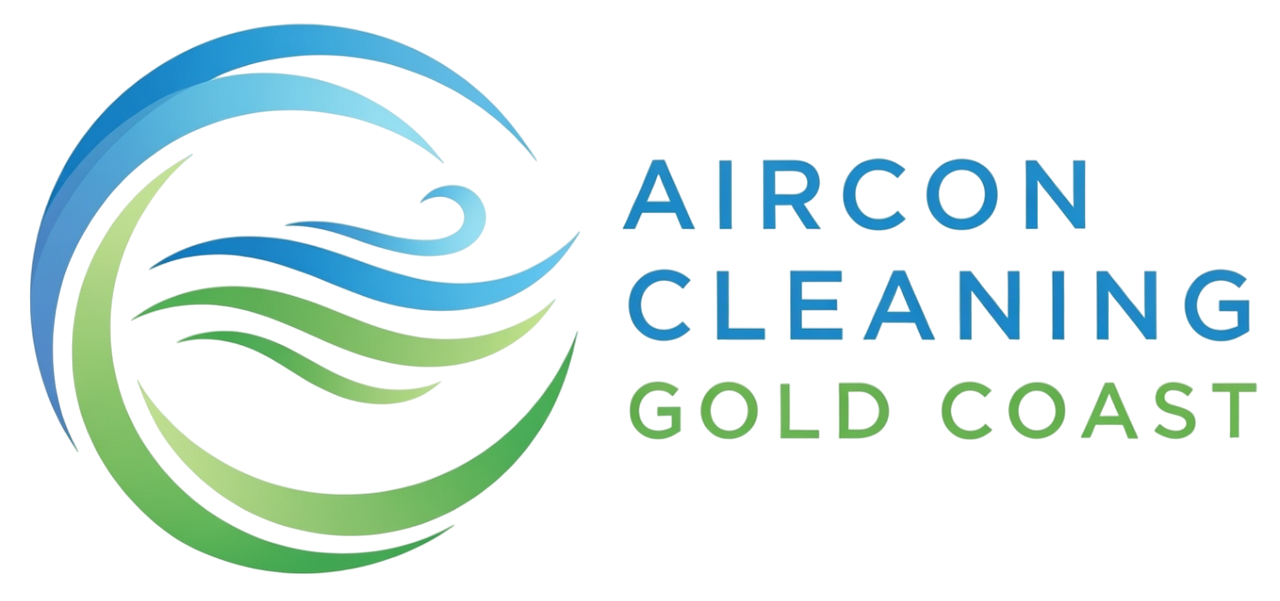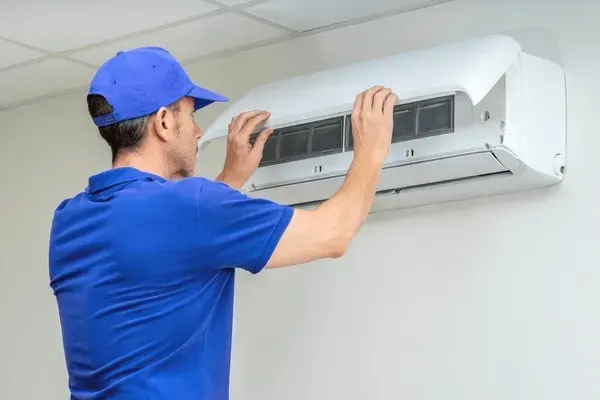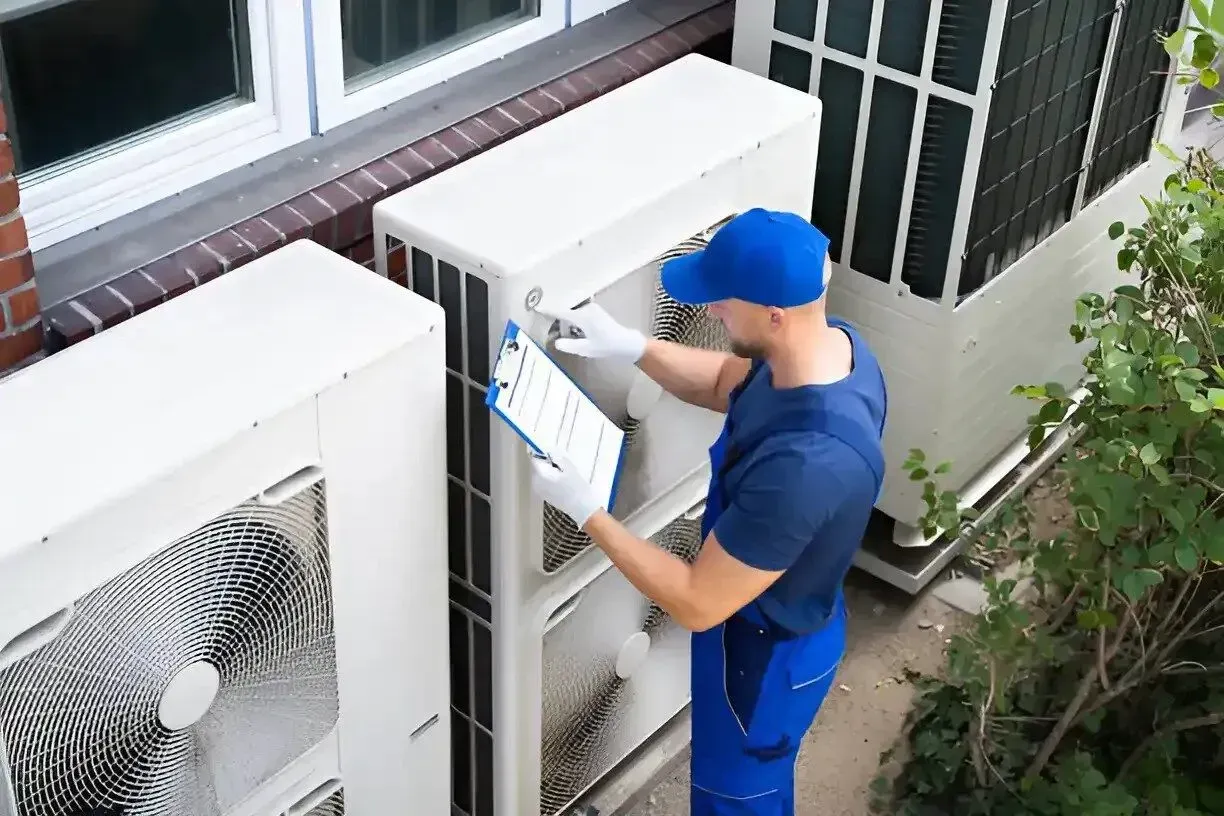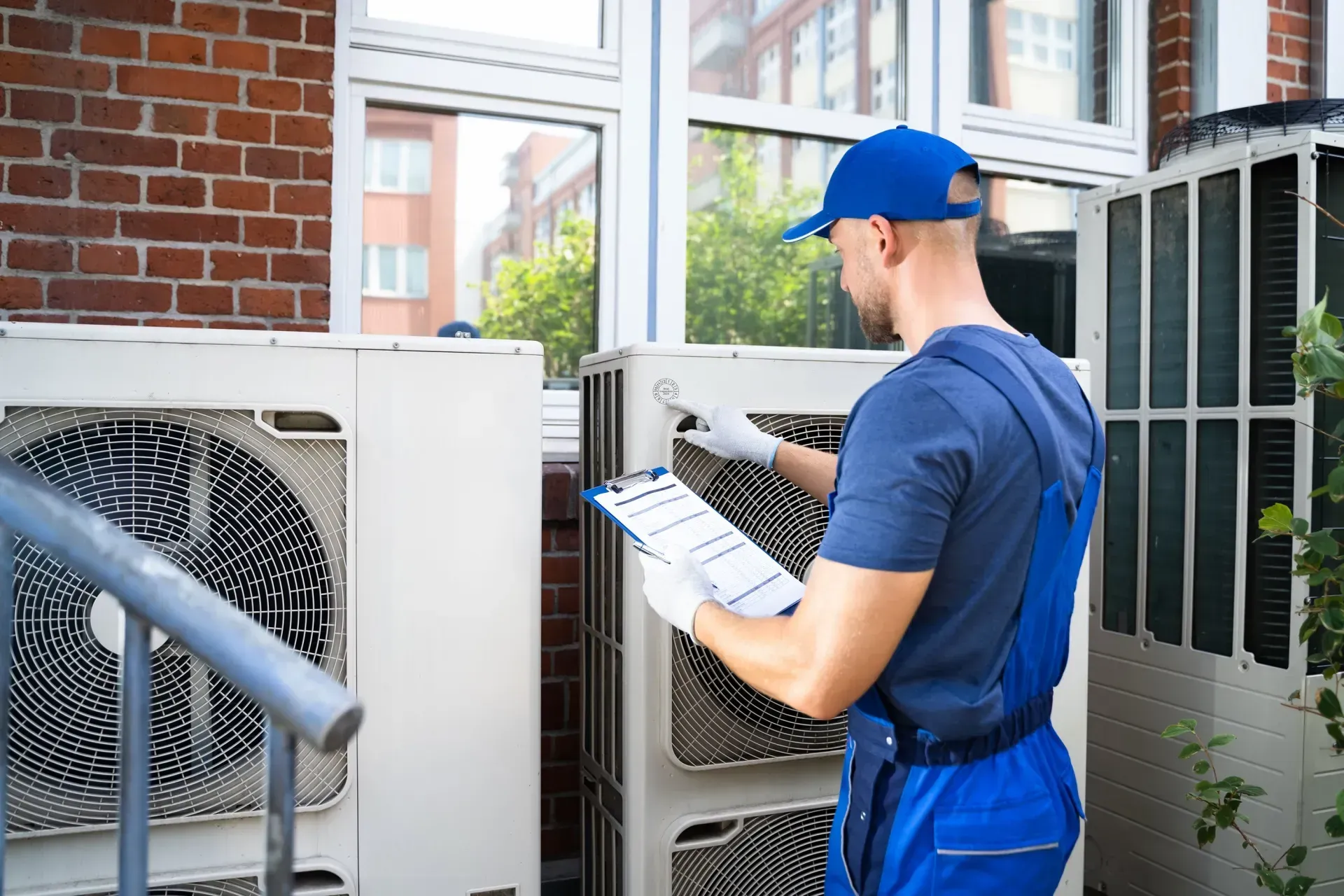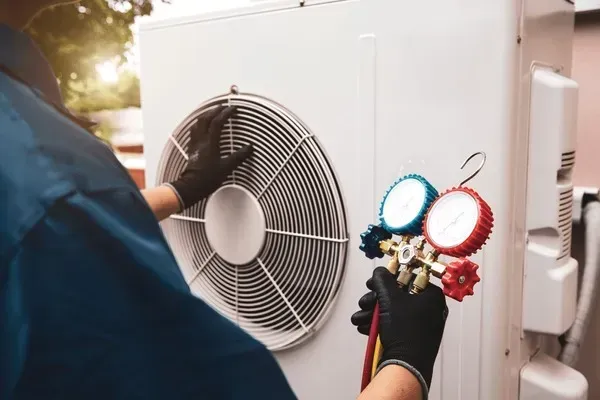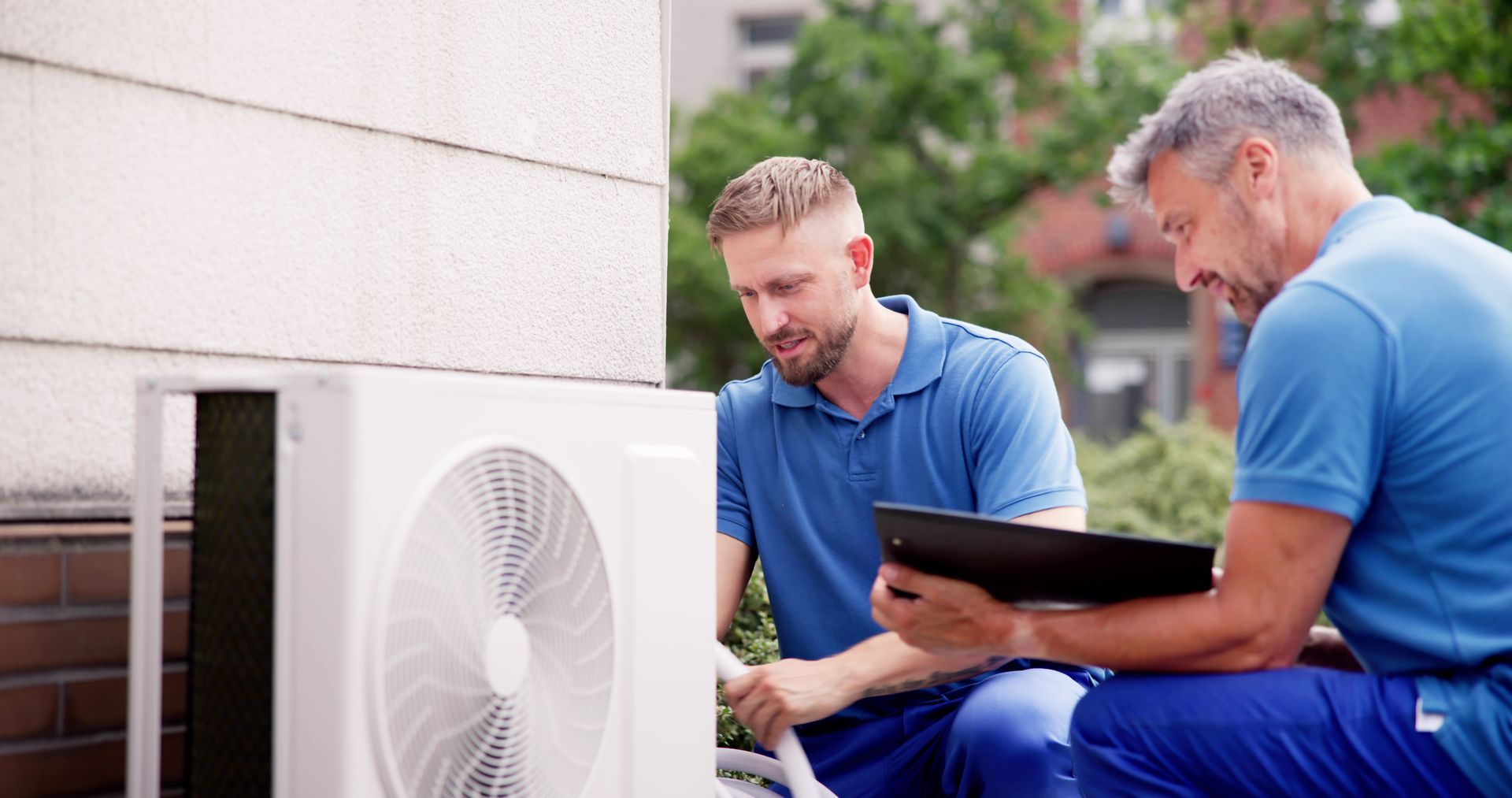Aircon Cleaning Gold Coast
How Ducted Air Conditioning Works: An Expert Guide
Ever wondered about the magic behind ducted air conditioning? You press a button on a central controller, and within minutes, your entire house is filled with refreshing, cool air, all without a single bulky unit on your walls. It’s a sophisticated and highly effective way to manage your home's climate, but the process behind it is a fascinating piece of engineering. Understanding how ducted air conditioning works can help you appreciate your system, use it more efficiently, and recognise when it needs expert attention.
A ducted air conditioning system is more than just an appliance; it's a complete climate control solution integrated into the structure of your home. From the refrigerant cycle that removes heat to the network of ducts that delivers comfort, every component plays a vital role.
This guide will break down exactly how ducted air conditioning work happens, explaining the journey of air and heat from your living room to the outdoors and back again. Knowing how your air conditioner operates is the first step toward lower running costs and a longer lifespan for your investment.
Need Expert Maintenance for Your Ducted System? Contact Us Today!
The Main Components of a Ducted Air Conditioning System
Before we dive into the process, it's important to know the key players in a ducted system. Unlike split systems, which have visible indoor and outdoor components for each room, a ducted air conditioner centralises its operations.
The main components are:
The Indoor Fan Coil Unit
This is the operational core of your air conditioning system. It’s a large unit that is concealed in your roof cavity or underfloor space. This indoor unit houses the evaporator coil and a powerful fan responsible for treating and circulating the air.
The Outdoor Unit
Located outside your home, this unit contains the compressor, condenser coil, and a fan. Its primary job is to release the heat that has been extracted from your indoor air.
Ductwork
A network of insulated, flexible tubes that run from the indoor fan coil unit through your roof cavity to every designated room. These ducts are the highways for your conditioned air.
Vents and Grilles
These are the discreet outlets in your ceiling or floor where the cool air enters your living space. Your system also has a larger return air grille in a central location, which pulls indoor air back into the system to be re-cooled.
Thermostat and Controller
This is the user interface, usually a wall-mounted panel, that allows you to set your desired temperature, control zones, and manage your entire air conditioning.
The Cooling Cycle: A Step-by-Step Guide to How Ducted Air Conditioning Work Occurs
The process of cooling your home with a ducted air con is a continuous cycle of heat exchange. Here’s a detailed breakdown of how that air conditioning work gets done.
Step 1: Capturing Warm Indoor Air
The cycle begins at the return air grille. The indoor fan coil unit actively draws warm air from your living spaces into the ductwork. This indoor air contains the unwanted heat that makes your home feel uncomfortable.
Step 2: The Heat Exchange at the Evaporator Coil
Once the warm air arrives at the concealed indoor unit, it is passed over a critical component: the evaporator coil. This part of the air conditioner is a network of pipes filled with a very cold liquid refrigerant.
As the warm indoor air blows across the cold evaporator coil, a heat exchange takes place. The heat energy naturally moves from the warmer substance (the air) to the colder one (the refrigerant). The refrigerant absorbs the heat, and in the process, the air becomes significantly cooler. This process also dehumidifies the air, which is crucial for comfort in Queensland.
Step 3: Distributing Cool, Conditioned Air
The fan inside the indoor fan coil unit then takes this newly chilled, conditioned air and pushes it through the extensive network of ducts. This cool air is distributed to the various rooms in your house, exiting through the vents to lower the temperature in your living space.
Step 4: The Refrigerant's Journey to the Outdoor Unit
After absorbing heat from your indoor air, the cooled refrigerant inside the evaporator coils has turned into a low-pressure, warm refrigerant gas. This gas is then pumped through copper pipes to the outdoor unit.
Step 5: Releasing Heat into the Outdoor Air
At the outdoor unit, the compressor works its magic. It pressurises the warm refrigerant gas, turning it into a very hot, high pressure gas. This hot gas then flows through another set of coils called the condenser coils. A large fan in the outdoor unit blows outside air across these coils.
This triggers another heat exchanger process. The heat from the refrigerant transfers to the cooler outdoor air and is dispersed. As the refrigerant loses its heat, it condenses back into a liquid state.
Step 6: The Cycle Begins Again
This now-cooler liquid refrigerant travels back towards the indoor unit. Before it enters the evaporator coil, it passes through an expansion valve, which causes it to become extremely cold again, ready to absorb more heat from your home. This entire cycle repeats continuously, keeping your home at the perfect temperature.
This efficient process is how all modern air conditioning systems work, but the scale and integration of a ducted air conditioning system make it perfect for whole-home comfort.
What About Heating? The Magic of a Reverse Cycle Air Conditioner
Most modern ducted air conditioning systems in Australia are reverse cycle systems. This means they can provide both cooling and heating from the same air conditioning unit.
A reverse cycle air conditioner works by simply reversing the heat pump process. In heating mode, the heat pump extracts heat from the outdoor air (even on a cold day) and transfers it inside. The indoor fan coil unit then blows air over the now-hot evaporator coils, warming the air before distributing it through the ducts. This makes ducted systems an incredibly energy efficient year-round climate solution.
Advanced Features: Zoning and Fresh Air Intake
Modern ducted air conditioners come with advanced features that enhance comfort and reduce energy costs.
Zoned Cooling for Ultimate Control
One of the biggest advantages of a ducted aircon is its zoning capabilities. Zoned cooling allows you to divide your home into different zones (multiple rooms, or even single rooms) that can be controlled independently. You can turn off the air conditioning to unused areas or set different temperatures in the living areas and bedrooms. This smart use of your ducted AC prevents energy wastage and can significantly lower your energy bills.
Does a Ducted Aircon Take Air From the Outside?
Typically, a standard ducted air conditioning system works by recirculating the indoor air. It continuously cools the same air within your home.
However, some premium ducted systems can be fitted with a fresh air intake. This feature allows the system to draw in a controlled amount of outside air, mix it with the recirculated indoor air, and then condition it. A fresh air intake can improve ventilation and introduce fresh, oxygenated air, preventing the air circulating in your home from becoming stale, especially in a well-sealed, modern home.
Why Professional Installation and Maintenance Are Crucial
As you can see, the way a ducted air conditioning work happens is a complex, balanced process. For this system to deliver efficient cooling and heating, every part must function perfectly.
This is why professional installation is essential. An expert will ensure the indoor and outdoor units are sized correctly for your home, the ductwork is properly sealed and insulated, and the entire system is commissioned for optimal performance.
Likewise, regular maintenance is key. Over time, dust and debris can clog the cold evaporator coil, hindering the heat exchange process. If the ducts are dirty, you're not getting conditioned air; you're getting air circulating with contaminants. This is why a regular service from a specialist team is vital to keep your ducted system running efficiently and protect your family's health.
Is Your Ducted System Due for a Service? Contact the Experts!
Frequently Asked Questions
How does a ducted air conditioner work?
A ducted air conditioner works by using a central indoor unit hidden in the roof cavity to cool air. This cool air is then distributed throughout the entire house via a network of insulated ducts connected to vents in each room. The system works by absorbing heat from the indoor air via an evaporator coil and transferring that heat outside through an outdoor unit.
What are the disadvantages of ducted air conditioning?
The main disadvantages are the higher upfront cost compared to split system air conditioning and the complexity of the professional installation, which requires adequate space in the ceiling or under the floor. If not properly maintained, they can also be less energy-efficient and circulate poor quality air.
Do you need to open windows with ducted air conditioning?
No, you should always keep windows and doors closed when your ducted air conditioning is operating. The system is designed to recirculate and cool the air inside your home. Opening windows allows cool air to escape and warm air to enter, forcing your air conditioning system to work much harder and increasing running costs.
Does a ducted aircon take air from the outside?
Most standard ducted air conditioning systems do not; they recirculate the internal air. However, some ducted air conditioners have an optional fresh air intake that can be installed to draw in a percentage of fresh, oxygenated air from outside to improve ventilation.
